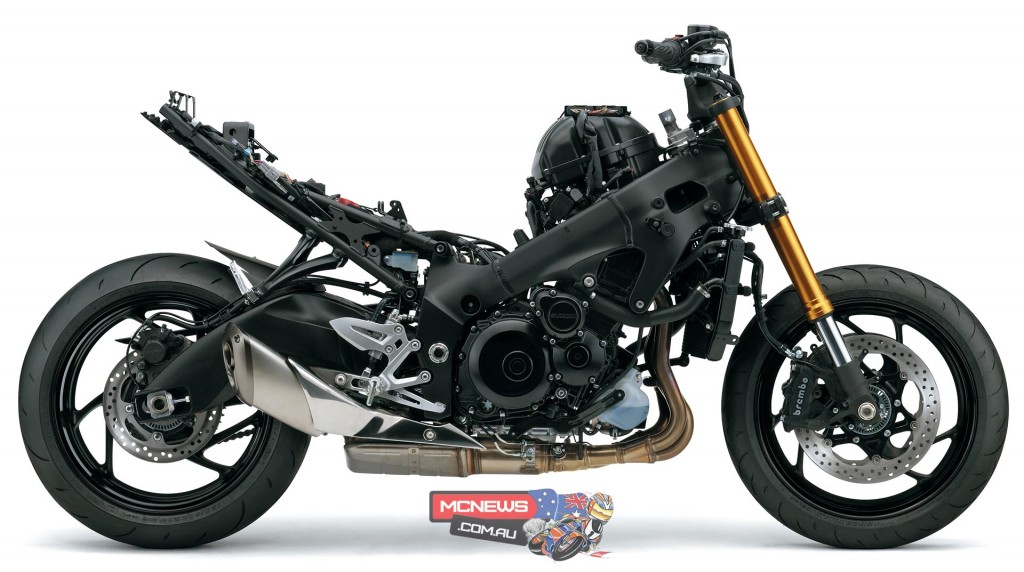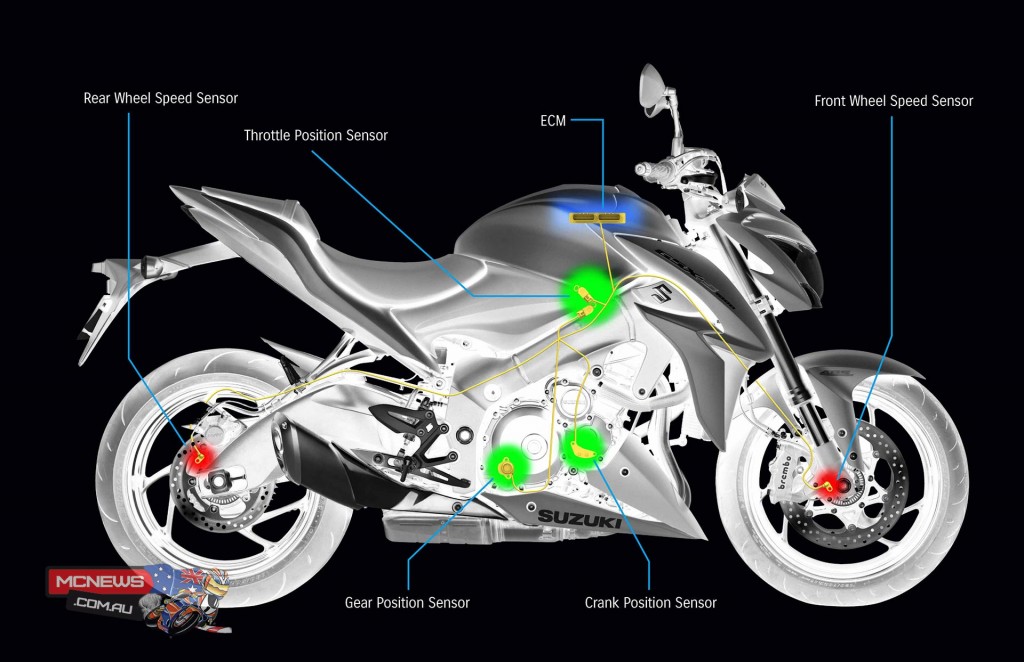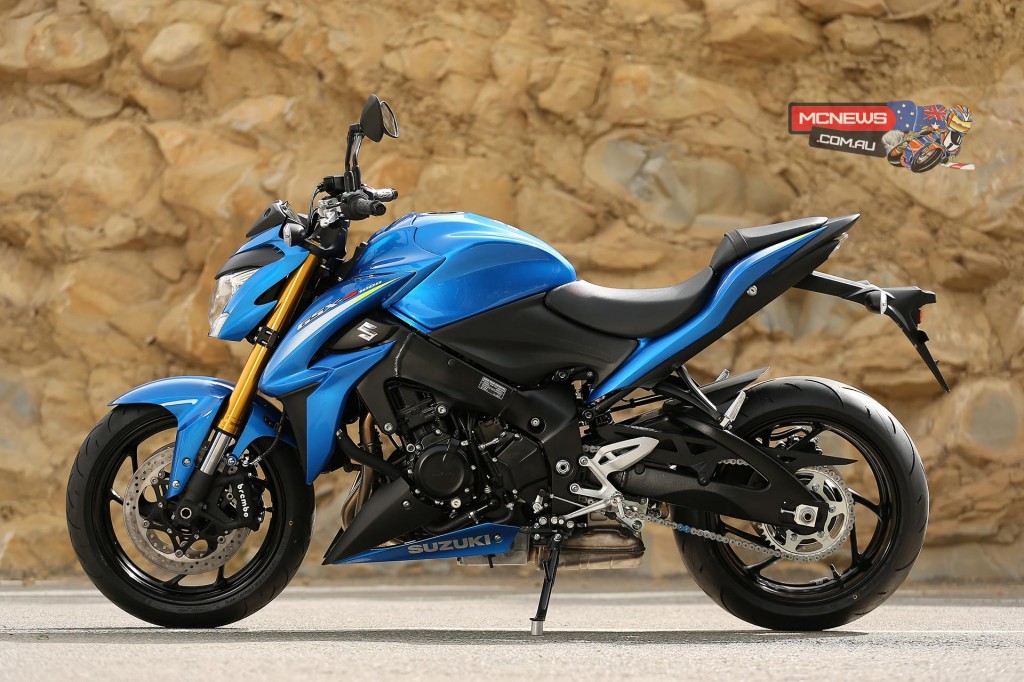
The chassis design brief was a tough one for the chassis engineer – it had to be good in city traffic, on highways, rural roads and twisty roads.
This was achieved with an all-new frame that is lighter than the GSX-R1000 frame. The frame was designed with FEM analysis technology and the main rail forms a straight line from the steering head to the swingarm pivot. The actual swingarm is straight off the current model GSX-R1000. Rake and trail figures are 25º and 100mm while seat height is just 815mm.
The forks are KYB fully adjustable 43mm inverted units with 120mm of stroke, while the shock is a link type unit with a 63mm stroke. It is adjustable for preload and rebound only.
The Brembo four-piston monoblock calipers have 32mm pistons and squeeze 310mm rotors. The calipers are the same as used on the current GSX-R1000. ABS is by Bosch.
The wheels are all-new six-spoke cast alloy units manufactured by TRP. The standard tyre is the Dunlop D214 with a 120/70 – 17(f) and 190/50 – 17(r).
The standard handlebar is a Renthal Fatbar, which is aluminium and very rigid. This is good for drops as well as reduced vibration.

The GSX-S1000 is not a super high-tech bike but it has just the right amount of electronics that you don’t need a degree in software engineering to understand the system. It’s really, really easy to use, which I found fantastic.
There are three traction control settings to choose from as well as ‘Off’. It’s a very easy system that is operated by a left ‘bar toggle switch, with the level displayed on the dash.
The TC system monitors front and rear wheel speeds, throttle position, crank position and gear position 250 times per second and quickly reduces power output when spin at the rear wheel is detected. Engine output is managed by ignition timing and air delivery to ensure smooth operation. Mode 1 is the lowest sensitivity level allowing a certain level of wheelspin, suitable for fast sports riding in dry conditions. Mode 2 is the second lowest setting and activates earlier – it is for normal riding conditions and is the mode I used most during the test. Mode 3 is for wet or cold conditions.
The ABS control unit is supplied by Bosch and weighs just 640 grams. It monitors front and rear wheel speed 50-times per wheel rotation and matches stopping power to available traction. I tested the system purposely in many conditions and found it fantastic.
The LCD instrument cluster is packed with features and weighs just 275 grams. It includes speedo, tacho, odo, dual trip meters, gear position, water temperature, range, fuel consumption average and instant, traction control mode and fuel gauge – plus a clock.
The GSX-S also features a one-press starter button (no need to hold it down) and you don’t have to hold the clutch in to start the bike.

A wild, bold and aggressive look was the brief for designer Shinji Tamura – with the look of a crouching beast, not a Transformer or Manga styling… With a target rider above the age of 40, a touch of class and style also had to go into the design process.
The headlight, a multi-reflector type with 60/55w bulb, has two LED lights positioned under it to give a ‘fang’ effect, while the rear end has an LED taillight with a double lens to add some style and class, according to Tamura-San.
The belly-pan is designed to have sharp lines and surfaces that connect dynamically to the tail section when viewed from the side, while the radiator shrouds are designed to emphasize a more dynamic and fierce side to the bike – as well as actually doing their job of directing airflow for cooling and rider comfort. Smart use of black plastics and painted surfaces gives the tail unit a very sharp and clean look and the short tail section gives a streetfighter touch to the bike. The stubby muffler adds to the aggressive look to the rear of the bike, as do the sportsbike style seats. Pillion comfort was not a priority as the target rider is a weekend quick blaster who rarely does long trips or takes pillions…
Continue to page five using buttons below























